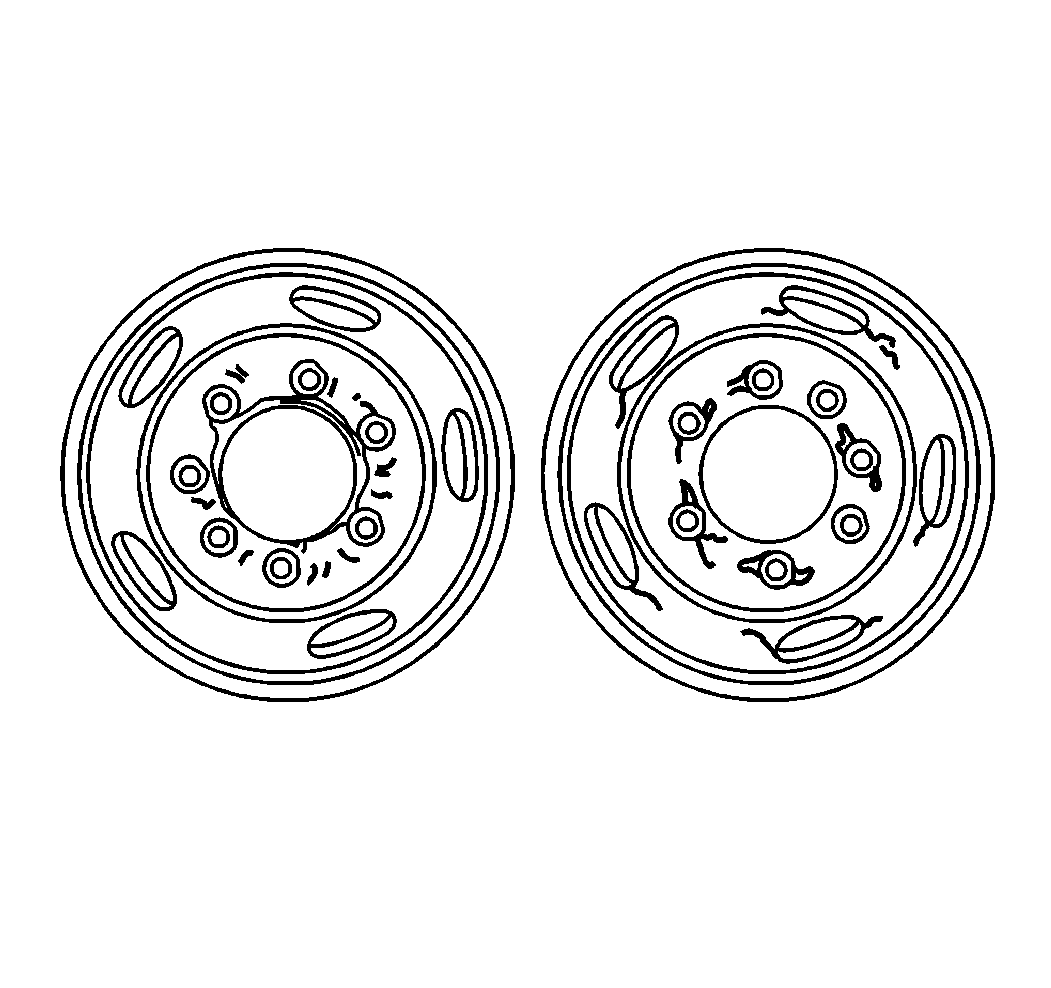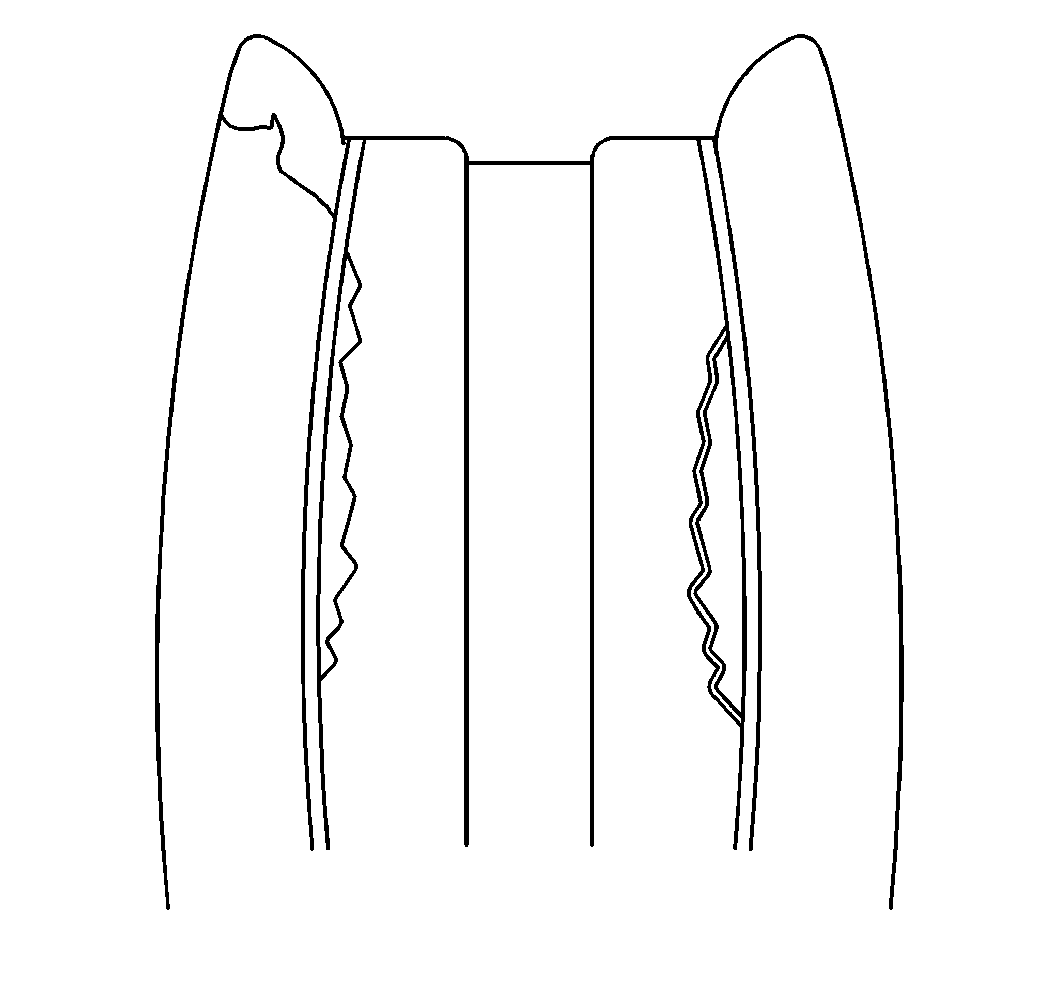| • | Inspect the wheel for worn wheel stud holes. Worn stud holes may
appear as a shiny worn surface on the wheel face. If the stud holes are
oval and if metal is built up around the holes, replace the wheels. |
| • | Inspect the wheel for cracks radiating from the hand, the stud,
the bolt, or the center holes. Cracks are a result of overloading. Replace
damaged wheels and inspect the wheel studs. The hub assembly may have
a worn mounting face. |
| • | Inspect the wheel ball seats for wear. Replace all damaged parts. |

| • | Inspect the wheel for damaged or cracked rims. |

| • | Carefully inspect the rims before mounting the tires. Replace
all cracked rims. Cracked rims are dangerous to use. |
| • | Inspect for damaged bead seats. Excessive corrosion and improper
bead seating can cause erosion and chipping of the bead seats. |
Wheel Stud Check Procedure
CAUTION:: If one stud is damaged, replace all the studs. A loose-running wheel
may cause only one stud to break, but the other studs could have internal
fatigue. Replacing only the broken stud and remounting the wheel may cause
further damage and personal injury. If the stud holes in the wheels have become
enlarged or distorted, replace the wheel.
Notice: A torque wrench or J 39544 must be used to ensure that wheel
nuts are tightened to specification. Never use lubricants or penetrating fluids
on wheel stud, nuts, or mounting surfaces, as this can raise the actual torque
on the nut without a corresponding torque reading on the torque wrench. Wheel
nuts, studs, and mounting surfaces must be clean and dry. Failure to follow
these instructions could result in wheel, nut, and/or stud damage.
Stripped threads on the studs may be caused by the following
conditions:
| • | Over-torquing the wheel nuts |
| • | Stud damage which occurred during wheel installation |
Replace any studs which show damaged threads.
Broken studs may be caused by the following conditions:
| • | Operating with loose wheel nuts |
| • | Over-torqued wheel nuts |
| • | Improperly seated wheels |
Wheel Nut Check Procedure
Notice: A torque wrench or J 39544 must be used to ensure that wheel
nuts are tightened to specification. Never use lubricants or penetrating fluids
on wheel stud, nuts, or mounting surfaces, as this can raise the actual torque
on the nut without a corresponding torque reading on the torque wrench. Wheel
nuts, studs, and mounting surfaces must be clean and dry. Failure to follow
these instructions could result in wheel, nut, and/or stud damage.
A loose mounting condition can cause damaged wheel nuts.
Replace all damaged wheel nuts and wheel studs.


